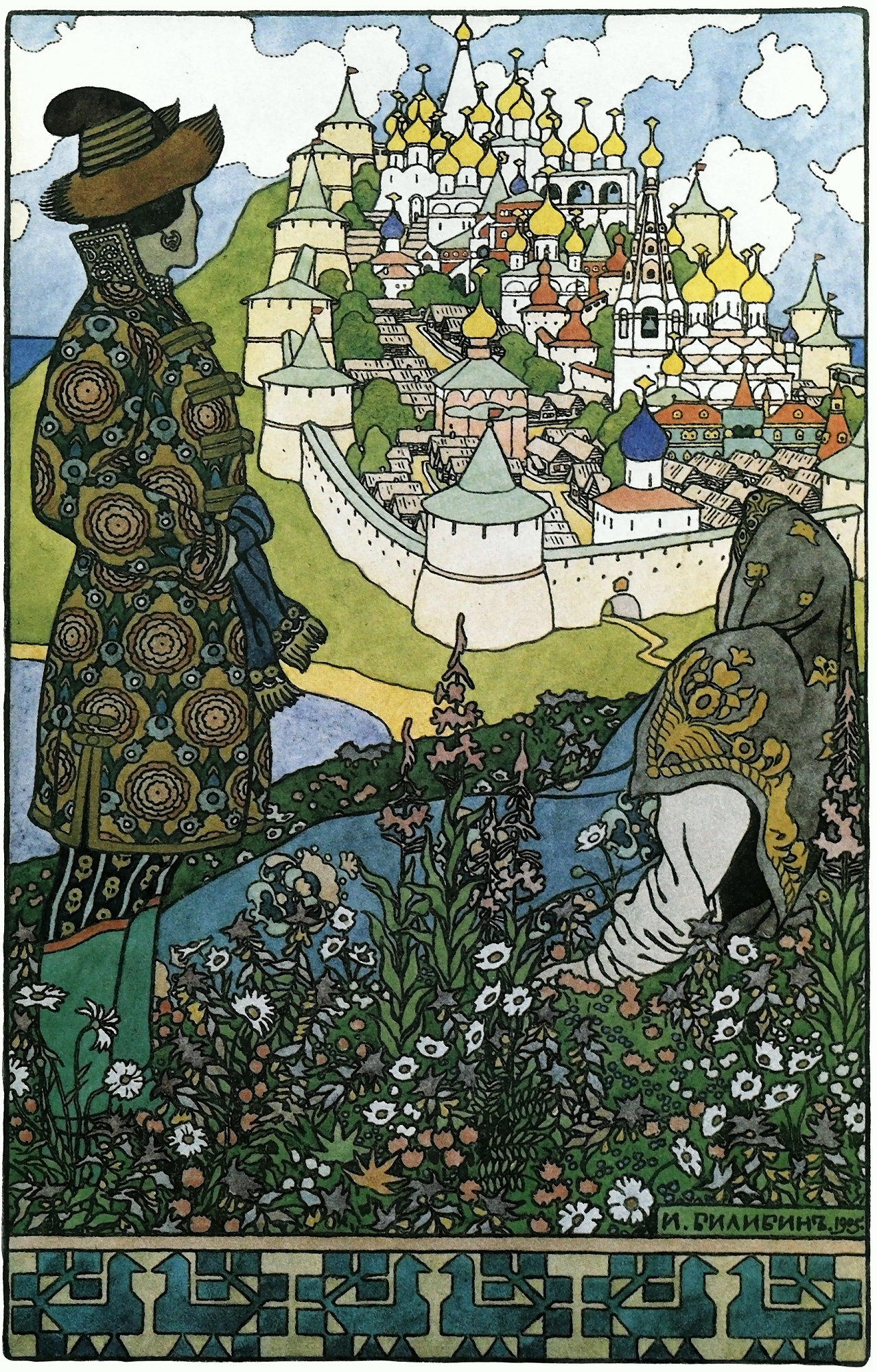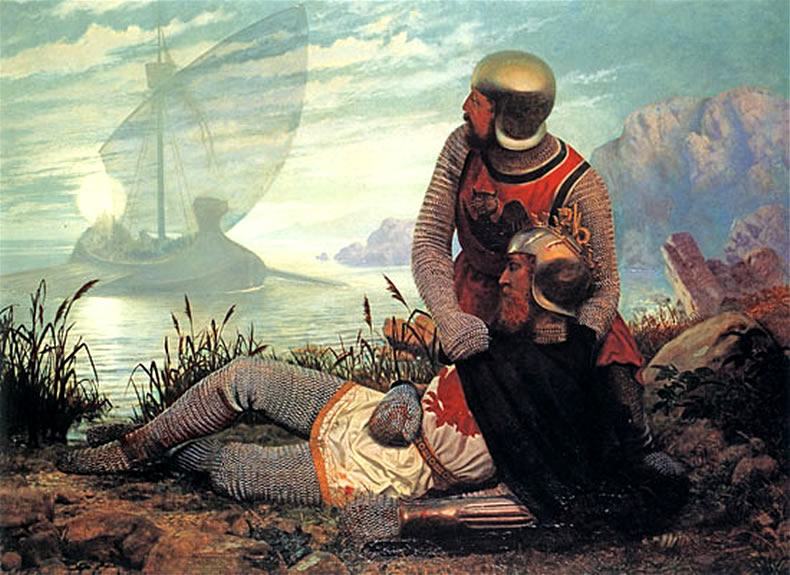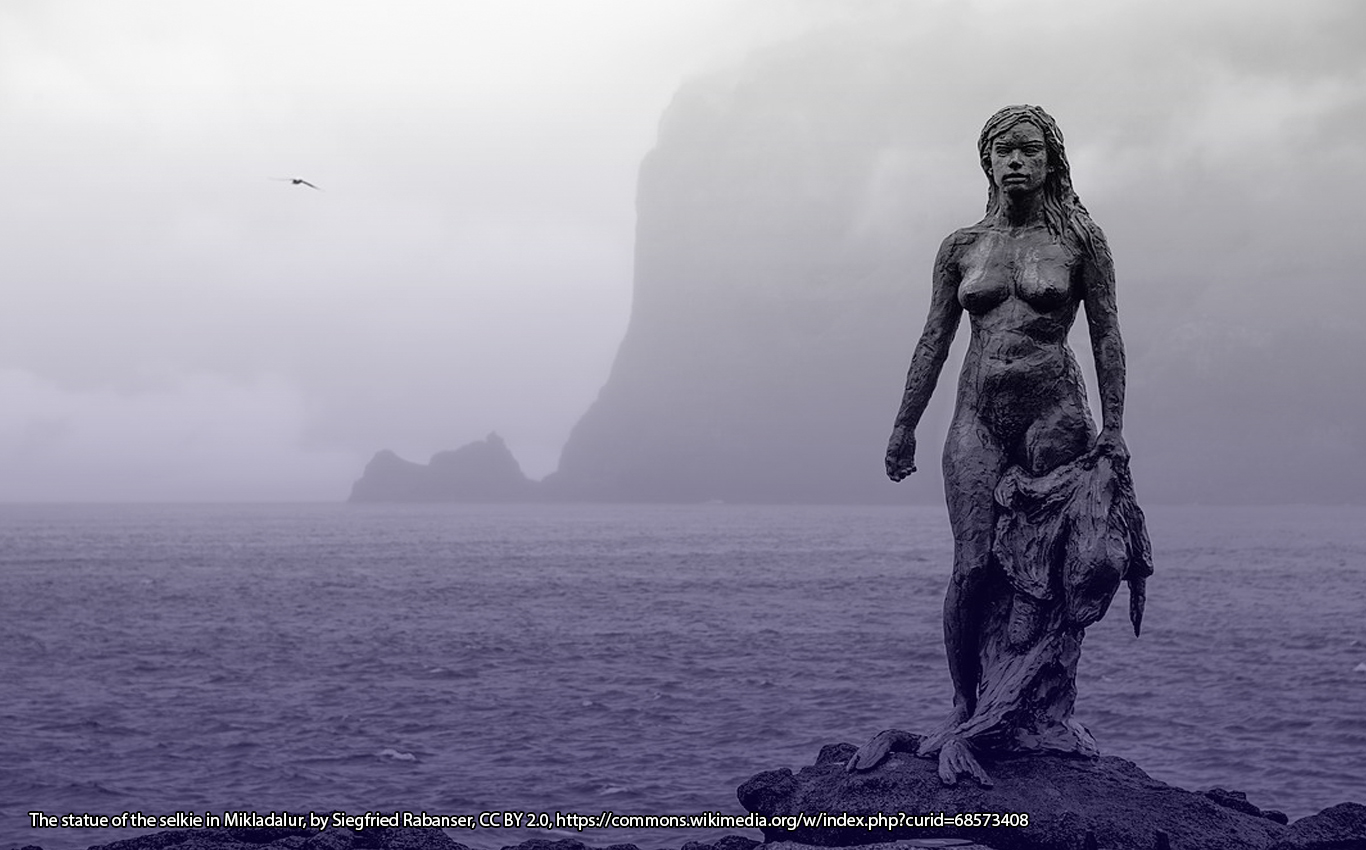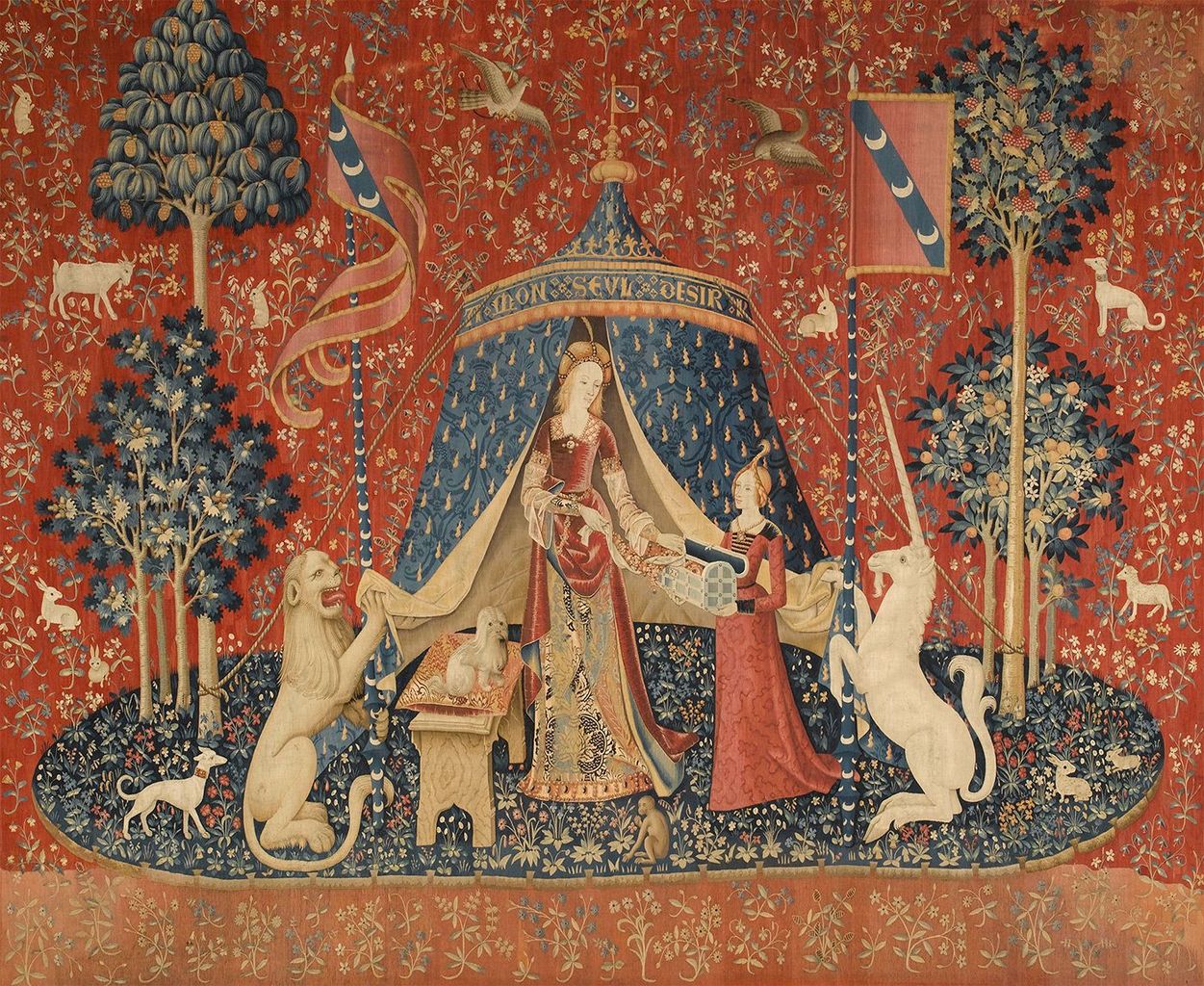Hy-Brasil, Buyan, Saint Brendan’s Isle, the Island of Antillia, and the Isle of Avalon are five fabled islands that were once believed to have existed by many people through the ages. All had their own magical qualities and characteristics that were given to them by the human culture they appeared in. Presented here is a brief introduction to these five fabled islands before concluding with a few ideas on their possible significance for the reader to think about.

1595 (First Edition 1570) Map showing Hy Brasil and St Brendan’s Isle – Public Domain
Hy-Brasil and the Court of King Breasal
In Irish mythology and folklore, Hy-Brasil was the island where the legendary Breasal, the High King of the World held his court. It was said to be situated in the North Atlantic Ocean, west of Ireland and was a kind of island paradise where all good things were bountiful and people lived in peace and happiness. All who dwelt there were bestowed with the gift of immortality.
Hy-Brasil was a difficult place to find because the island was said to be shrouded in mist. It could only be seen once every seven years when the mist lifted which was the time when Breasal held his court on the island. It was during these brief times when the island was visible that the court was believed to be in session. Although the island could be seen at such times, it could not be reached and King Breasal was said to have the power to make the island sink below the waves or rise above them at his command.
Hy-Brasil was a phantom island and actually appeared on nautical maps as far back as 1325, when it was shown on the Dalorto Chart created by an Italian-Majorcan cartographer, Angelino Dulcert. There are many other examples of phantom islands that appear on ancient maps but cannot be found and are later removed from new versions. Some are mythical such as Antillia and Saint Brendan’s Isle, while others may once have existed but disappeared beneath the waves in volcanic, or geological action, or perhaps covered by rising sea levels. Some such as Crockerland were hoaxes or based on a kind of mirage known as Fata Morgana, while others were navigational errors. Many explorers sought for Hy-Brasil and while a few claimed to have found it no evidence was ever brought back confirming the existence of King Breasal and his island and it was eventually removed from maps.

The Hidden Island of Buyan
Slavic mythology, tells of the island of Buyan which in some traditions is invisible while others say that it can disappear or appear when approached. Either way, it is a hidden island and for good reason. It is the place where many things on earth have their origins or are placed for safekeeping.
The Sun and the three brothers; the North Wind, the East Wind, and the West Wind, who are his servants live on Buyan. It is believed to be the place where of all weather in the world originates created by the god Perun.
Buyan is the place where Koschei the Deathless was said to keep his soul separate from his body so that he could not die or be killed. The only way to kill him was to kill his soul. For safe keeping, he placed his soul inside a needle, which is placed inside an egg, which is placed inside a duck. The duck is placed inside a hare, which is kept in a strong chest which has been buried under the Sacred Oak Tree, which is a similar concept to the World, or Cosmic Tree in other cultures. Through its roots, it connects the underworld to the outer world and its trunk and branches connect the outer world to the heavens.
In some legends, Buyan is also the place where a pure white stone known as the Alatyr is found. The Alatyr is said to be the center of the universe and has magical properties and considered by some to be the Father of all Stones. Healing rivers flow from underneath it and it is said to have the power to grant eternal happiness. It is guarded by Gagana, which is a fabulous bird with a beak of iron and claws of copper, and Garafena a magical snake.
Buyan is also the home of the Zorja who are two goddesses who serve Dažbog, the sun god. Their names are Zorja Utrennjaja and Zorja Vechernjaj. Zorja Utrennjaja is the Morning Star, whose task is to open the palace gates every morning to allow the sun-chariot to leave on its journey. Zorja Vechernjaja is the Evening Star and her task is to close the gates on its return. In some myths, Dažbog is their father.
The location of Buyan is open to debate but many think it is in the Baltic Sea region and one of the favorite candidates is the island of Rügen. However, many scholars regard Buyan as a kind of Otherworld or concept without a physical location on earth.

Saint Brendan’s Isle, the Land of Promise
Saint Brendan’s Isle is a mythical island that appeared on many medieval maps which showed it situated in the North Atlantic Ocean. It was named after an Irish abbot named Brendan who was said to have visited it on an epic sea voyage. He also came across several other islands on his voyage and mistakenly thought the back of a sea monster to be an island.
The story of Saint Brendan’s voyage was told in a Latin text called Navigatio Sancti Brendani Abatis, or The Voyage of Saint Brendan the Abbot, that was published in the 9th century. This gave the first account of the voyage and discovery of a fabulous island paradise described as a “Land of Promise”. This was said to be a green and fertile place where many flowers and fruits grew in abundance and where there were rivers of pure water.
The existence of the island was taken seriously and was depicted on many maps of the time. The most notable was Erdapfel by Martin Behaim’s in 1492 but despite this, it was not a place that could easily be visited as it supposedly disappeared when approached by ships. Many sightings were reported right up to the 18th century but it was eventually taken off maps as the Atlantic Ocean became better explored and mapped.
The Voyage of Saint Brendan is seen as an immram which is a type of Irish adventure tale where a hero undertakes a journey either to fulfill his destiny or for adventure. It has much in common with the story of The Voyage of Bran which was influenced by Irish mythology. These were written in the Christian era but contain pagan elements that challenge the hero’s faith. Although the existence of the island was taken seriously at the time it may be that the Voyage of Saint Brendan the Abbot was an allegory for a desired religious spiritual state of being. This was to be achieved through a journey of faith and obedience to the Christian way, rather than a place on the earthly plane.

The Isle of the Seven Cities of Antillia
The fabled Isle of the Seven Cities of Antillia is a phantom island which was said to lay westward of Portugal and Spain somewhere in the Atlantic Ocean. Its existence was once taken seriously and was shown on maps up until about the 15th century. Both Spain and Portugal laid claim to it even though it could not be found. Some maps depicted Antillia to have a smaller companion island called Roilla, or Royllo.
According to older legends during the Umayyad Conquest of Hispania in the 8th century, seven Visigothic bishops along with their followers took to ships to escape their enemy. Sailing westwards they discovered an unknown island which they settled on. They burnt their ships so that they could never return and set about making the island their new home.
They built seven cities on the island each ruled over by a bishop and lived there in peace practicing their religion. The sand on its beaches was believed to contain a high density of gold dust. This may have been one of the reasons it remained on many European maps for so long and would have been a huge incentive for any adventuring mariner to find. Some say that although some intrepid sailors visited the island few ever left it. It may be that those who did manage to land were not allowed to leave for fear that they would divulge their secret location to their enemies who would then look for them and destroy them.
Another legend tells how passing ships have seen the island but when it is approached it vanishes. As the Atlantic Ocean became more frequently explored and traveled, by the 15th century neither Antillia or Royllo was shown on newer maps though the Spanish Antilles are said to be named after it. Eventually, both islands were left off maps as the Atlantic became better explored.

Avalon, the Isle of Apples
The Isle of Avalon, sometimes called the Isle of Apples, has a special place in the mythology, folklore and legend of the British Isles It is also featured in the traditions of Brittany and associated with Arthurian legend and romance. Most scholars agree it had its origins in Celtic mythology though different writers have produced differing descriptions and accounts of the island and its inhabitants which have added to its mystique. In some accounts it is not described as an island though it depends on how the term “island” is defined. Rather than being surrounded by water it could be an “otherworld”, surrounded by the known world, making it an island in the human world of perception and experience.
Geoffrey of Monmouth appeared to regard it as an island in the waters and in Historia Regum Britanniae says King Arthur’s famous sword Excalibur, came from Insula Avallonis and was the place King Arthur was taken for healing after he was mortally wounded. In his work, Vita Merlini, or The Life of Merlin, Geoffrey refers to it as, Insula Pomorum, or Isle of Apples. He described it as a place of great fertility where plants grow without the need for cultivation growing spontaneously without human aid. As such crops and fruit and especially apple trees, in particular, grew in abundance and could be harvested any time. People lived to over the age of one hundred years and often more in peace and happiness. It also came to have associations with the Holy Grail.
In other texts by other authors the titular head of Avalon is the Lady of the Lake, sometimes called Nimue, Elaine, or Vivien, and various versions of these names. According to Geoffrey, there were nine sisters who lived on the Isle of Avalon who were skilled in the arts of magic and healing and they exercised, “a kindly rule over those who come to them from our land.” The chief among them was Morgan Le Fay. The names of her sisters were Gliten, Glitonea, Gliton, Moronoe, Mazoe, Tyronoe and Thiten who was renowned for her skill playing the lyre.
Morgan was the wisest and the most skilled in healing knowing how to use plants to cure sickness and wounds to the human body. She was skilled in the art of astrology and had taught it to her sisters. Morgan was also a shapeshifter who could change from her human form into that of animals or birds and could and fly in the sky.
Avalon was the place King Arthur was taken by his surviving companions after the battle of Camlan when he was mortally wounded by Mordred. The hope was Morgan would be able to heal him. On examining Arthur she informed his companions that he could be cured but that he would have to stay a long time with her in Avalon and would have to accept the treatment she offered. This being his only hope his companions agreed to leave the stricken king in her care and returned back across the sea to Britain. Arthur remained on the enchanted island healing his wounds but it was prophesied he would return again to save Britain in a time of need.
The location of Avalon is unknown though several places around Britain claim the title. The most famous claim comes from Glastonbury Tor, which was once an island. Another idea is the that Avalon was not so much an earthly location but a place that exists between the earthly realm and the Otherworld, separate to both but connecting to both a place of crossover or step over from one to the other.
From the elusive island of Hy Brasil, King Breasal had a safe place to rule the world ensuring the natural order was kept. The Slavic people gave Buyan magical qualities to keep safe important concepts such as the Alytar and the Sacred Oak Tree and it was safe enough for Koschei the Deathless to keep his soul there. For Saint Brendan, although he found many islands, the Land of Promise, which he really sought may have been more of a goal of spiritual attainment. The seven Visigoth bishops found a distant island where a way of life they believed in and cherished could continue untroubled and in safety out of reach of their enemy. The Isle of Avalon holds a special place in the mythology of the British Isles as the place where their King awaits the call to return and save his people. Of course, there are many other ideas concerning these mythical places, but what really matters is what each person makes – or is made, from these five islands of fable.
Recommended books from #FolkloreThursday
Further reading and references
Hy-Brasil: The court of King Breasal
The Legendary Island of Hy-Brasil
An island called Brazil – History Ireland
Brasil (mythical island) – Wikipedia, the free encyclopedia
The Hidden Island of Buyan
Buyan – the story of a mythical invisible island
St Brendan’s Isle, the Promised Land
Nauigatio sancti Brendani abbatis [the Voyage of St Brendan the Abbot
Saint Brendan’s Island – Wikipedia
In Saint Brendan’s Wake – Villanova University
RTÉ Radio 1: Documentary on One – Promised Land of the Sa
The Isle of the Seven Cities of Antillia
The Seven Cities – Jason Colavito
EsoterX – The Phantom Isle of the Seven Bishops: Portuguese Refugees and Irish Saints
Avalon, the Isle of Apples
History of the Kings of Britain – York University
Vita Merlini Index – Sacred Texts
Vita Merlini, Basil Clarke’s English translation from Life of Merlin: Vita Merlini (Cardiff: University of Wales Press, 1973) from Jones Celtic Encyclopedia
Caer Feddwyd – Articles – The Origins of Avalon
EBK: Glastonbury, the Isle of Avalon
Afallach – Wikipedia, the free encyclopedia
General
Singing Over the Bones – The journal of writer, psychologist & mythologist Dr Sharon Blackie – The re-enchantment of psychology: or, why we are not imagining myth, but myth is imagining us













![Boadicea, leader of the rebellion against the Romans. By Joseph Martin Kronheim (1810–96)[1] - This file has been extracted from another file: Pictures of English History - Plates I to IV.jpg, Public Domain, https://commons.wikimedia.org/w/index.php?curid=12705208](https://folklorethursday.com/wp-content/uploads/2020/10/Pictures_of_English_History_Plate_IV_-_Boadicea_and_Her_Army.jpg)




